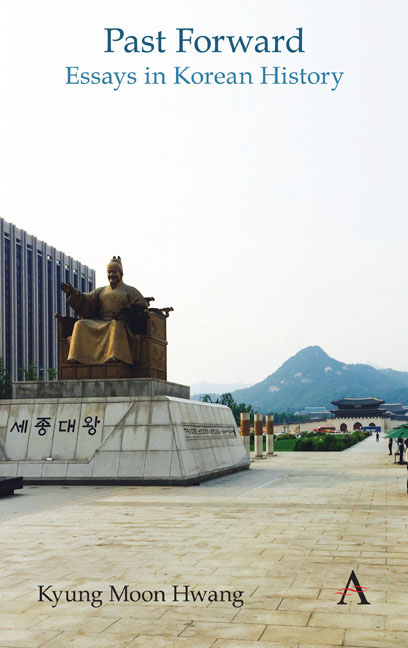Book contents
- Frontmatter
- Contents
- List of Figures
- Foreword
- Chronologies of Korean History
- Themes
- Acknowledgments
- Note on Romanization and Spelling
- Part I Circulating History
- Part II Durable Traditions
- Part III Ancient Remains
- Part IV Dynastic Depths
- Part V Modern Origins
- 24 Jungin, Forerunners to Professionals
- 25 1894, a Signal Year
- 26 Great Korean Empire
- 27 March First Independence Movement
- 28 The Politics of Disease
- 29 Korean Universities
- Part VI Challenges of Nationhood
- Part VII History Makers
- Part VIII External Presences
- Part IX Trials of Modernization
- Part X Gripped by the Past
- Index
25 - 1894, a Signal Year
from Part V - Modern Origins
- Frontmatter
- Contents
- List of Figures
- Foreword
- Chronologies of Korean History
- Themes
- Acknowledgments
- Note on Romanization and Spelling
- Part I Circulating History
- Part II Durable Traditions
- Part III Ancient Remains
- Part IV Dynastic Depths
- Part V Modern Origins
- 24 Jungin, Forerunners to Professionals
- 25 1894, a Signal Year
- 26 Great Korean Empire
- 27 March First Independence Movement
- 28 The Politics of Disease
- 29 Korean Universities
- Part VI Challenges of Nationhood
- Part VII History Makers
- Part VIII External Presences
- Part IX Trials of Modernization
- Part X Gripped by the Past
- Index
Summary
In late July of 1894, a quick succession of events took place that overturned the old order in Korea, and eventually in East Asia as a whole. What began with the Japanese military's seizure of the Korean royal palace led soon to the Gabo Reforms, a series of fundamental changes decreeing a completely new form and direction for the government and overturning social and cultural norms that dated back centuries, if not millennia. Slavery, hereditary social status, discrimination against widows and concubines, and many other means of determining social privilege were formally abolished.
This did not mean that everything shifted overnight, however, as some of these reforms took years and even decades to realize. But the initiation and articulation of momentous change proved significant and durable, and the “spirit of Gabo” persisted as a driving force for social and political reform that shaped the subsequent emergence of modern Korea.
The Japanese had a lot to do with this, as their troops had enabled the Gabo Reforms to occur in the first place, and a decade later they returned, amid a war with Russia, to begin the colonization of Korea that would last until 1945. But back in 1894, the Japanese had little to do with the actual substance of the Gabo Reforms, which addressed deeply rooted problems that could only be identified and properly addressed by Koreans.
The Japanese also had a larger agenda: China. They were determined to topple China's domination over northeast Asia, a sphere of influence dating back thousands of years. The Japanese victory over the Qing dynasty in a war, which began in the summer of 1894 and was fought almost exclusively in Korea, flipped the traditional order of East Asia. It also facilitated Japan's empire building through the taking of Taiwan and parts of Manchuria as war booty in 1895, then Korea in the first decade of the twentieth century, the rest of Manchuria in the 1930s, and finally much of East and Southeast Asia, including China, in the 1940s. This half-century growth of Japanese imperialism, and of Japanese economic and cultural influence over the region, became arguably the dominant historical factor in East Asia in the modern era. And arguably it began in the streets of Seoul in July 1894.
- Type
- Chapter
- Information
- Past ForwardEssays in Korean History, pp. 72 - 74Publisher: Anthem PressPrint publication year: 2019



